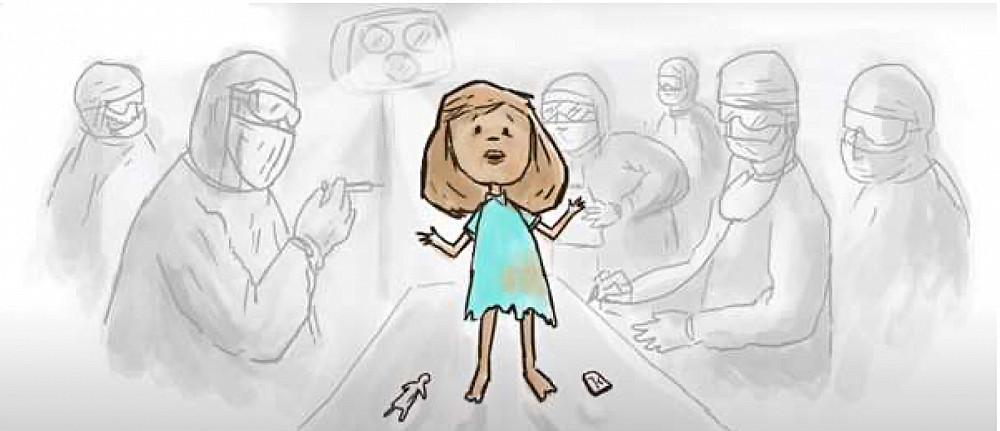In the last years, the European Union has been facing unprecedented massive flows of unaccompanied minor migrants (UAMs) from regions struggling with poverty, war and natural disasters. According to United Nations High Commissioner for Refugees (UNHCR), unaccompanied minors, also called unaccompanied children, are children under 18 years of age who have been separated from both parents and are not being cared for by an adult who, by law or custom, is responsible to do so[1]. Due to the inaccurate data, it is difficult to assess the exact scale of unaccompanied minors in the EU. Between 2014 and 2017, estimated number of 219 575 minors came to the EU (and Norway) seeking for asylum and estimated number of 48 591 unaccompanied minors came for other reasons. Interestingly, in 2015, the number of UAMs seeking asylum increased significantly by 315% compared to the previous year, reaching a total of 99 995 minors.[2] According to the statistical office of the European Union, after this peak year, the downward trend continued throughout the years with 13 8000 UAMs applying for asylum in 2019, 85% of them being males. Majority of unaccompanied minors in
2019 seeking the asylum were from Afghanistan (30%), Syria (10%), Pakistan (10%), Somalia, Guinea and Iraq (5% each). As indicated by Eurostat, in 2019 Greece had the largest number of unaccompanied minor asylum seekers (24%), followed by Germany (19%), Belgium (9%) and the Netherlands (8%)
Why do unaccompanied minors come to the EU? The most common reasons include: the expectation for better life; to escape from wars, poverty or natural catastrophes; to avoid sexual or work exploitation. According to European legislation of individual member states, children who seek asylum have a varied set of rights than adults in a similar position. Age is a criterion of utmost importance in the asylum procedure for identifying vulnerable asylum applicants. Notably, many of them are over 18 years old but claim to be younger and provide wrong age to gain advantage, to increase their chance to obtain a residence permit, receive special care and support or other benefits. The EU Member States assure the special treatment of unaccompanied minors. Across the EU, all unaccompanied minors are provided with accommodation; are appointed a representative in the form of a guardian and/or other representative to act in the best interests of the child; are provided healthcare, including emergency treatment, basic medical care, additional specialized medical care and counselling where needed. In addition, the vast majority of EU Member States grant access to education to all unaccompanied minors; grant them social welfare assistance. So, age is one of the deciding factors in whether or not the asylum application will be successful.
In the EU Member States, a variety of authorities and organizations at national, regional and local level are involved in the integration of unaccompanied minors. Many unaccompanied minors enter the border without appropriate identification documents (such as ID documents, passports, birth certificates, residence cards), causing problems with age estimation, especially in late teenage years. Or when an age is given, it is often untraceable and therefore questioned by immigration authorities. There are significant legal differences with respect to right and obligations of minors and adults. From 18 years the individual will be treated as an adult and there may be a focus on returning him to his originating country. Asylum seekers under the age of 18 must not be misclassified and treated as adults, as this could lead to serious consequences and adults must not be mistakenly assessed as minors and placed together with children in asylum centers, both of scenarios which are particularly concerning. Interestingly, doubts may also arise when the applicant claims to be an adult. Unaccompanied children may pretend to be adults in order to avoid supervision of the authorities, avoid limited freedom of movement or to be allowed to work. In such cases, children are largely vulnerable to traffickers and smugglers, making them easy prey for various types of exploitation. If the individuals have a valid documentation and if their age is certainly under 18 years, age assessment is not necessary. Simply put, a proven identity with confirmation of chronological age is fundamentally important since age determines how the individual will be treated by the state. To protect the children, ensure rule of law and prevent the abuse of the system, the EU States have introduced age estimation procedures to assess the age of asylum seekers who lack reliable documentation.
Forensic Age estimation (FAE) aims to define the chronological age of person of unknown age because the births may never have been registered or they arrive without being able to document their age. It is important to mention, FAE or any other medical test give doubtful results and cannot define the exact and accurate chronological age of human being. Nevertheless, due to the absence of identification documents among immigrants, the EU Member State use age assessment to establish whether or not an individual is under 18 years of age and therefore eligible for protection under the United Nations' Convention on the Rights of the Child. Until now, in the EU, there is still no agreement on which methods should be used when determining the age of a supposedly minor migrant and national legislation concerning these procedures differ across the EU States. The Member States use variety of techniques to determine the actual age of a minor to certify minor status, including interviews, estimation based on physical appearance, dental observation, sexual maturity assessment, radiological test, psychological and sociological assessment.
The estimation of age raises number of ethical concerns. Using X-ray technology for FAE purposes and without a clinical indication raises the possibility of harmful effects as a result of radiation exposure. The use of methods involving radiation should be deemed only as a last resort with as low as reasonably achievable radiation dose. First, less invasive (non-medical) methods should be used, if it is inevitable to use medical methods, radiation-free methods should be prioritized over those that involve radiation. MRI (Magnetic Resonance Imaging) produces detailed pictures of organs, bones and other internal body structures through using strong magnetic fields and radio waves. Unlike X-rays, MRI machines are radiation free, this could dismiss the ethical concerns about radiation risks in relation to age assessment using X-ray technology. However, MRI scans produce loud sounds and require subject's entire body to be enclosed by a narrow tube, thus, may not be suitable for all patients, especially for patients with previous psychological trauma or claustrophobia. The possibility of frightening experience should be taken into account and minimized when implementing age assessments, maybe through the use of open MRI scanners.
Another important consideration that needs to be taken into account is the issue of intrusiveness when conducting sexual maturation observation. Sexual development is an issue of exquisite privacy and sensitivity. The exhibition of physical parts is extremely traumatic for children, especially for children who may have been exposed to sexual abuse. Therefore, no method involving nudity or the examination, observation or measurement of genitalia or intimate parts should be used for age assessment purpose especially since the techniques do not allow to determine and exact age and the results are impacted by numerous genetic and environmental factors. The best interests of the child, which is rooted in the European human rights and the international legal framework, must be the priority in all actions concerning children.
The age assessment procedure must respect the applicant's dignity and physical integrity. The assessment should be stopped at the point where a method becomes highly intrusive, regardless of its potential accuracy. Since none of the current methods of age assessment are able to determine an exact specific age, the benefit of the doubt throughout the whole age assessment process is crucial. According to Directive 2013/32/EU of the European Parliament and of the Council on common procedures for granting and withdrawing international protection: " Member States may use medical examinations to determine the age of unaccompanied minors within the framework of the examination of an application for international protection where, following general statements or other relevant indications, Member States have doubts concerning the applicant’s age. If, thereafter, Member States are still in doubt concerning the applicant’s age, they shall assume that the applicant is a minor (25.5)."
To respect the asylum seeker’s autonomy, the age assessment must not be performed without their voluntary informed consent. The applicant has the right to refuse to undergo any medical examinations. This fact should not result in automatic assumptions, in case of refusal, the applicant should not be automatically considered an adult.
Currently, EU Member States use different methodologies for age assessment. The practical difficulties in assessing the age of UAMs highlights the urgent need for consistent approach and unified methodology across the Member States in age estimation to ensure the protection of children. (Particularities of each case must be taken into account). Age assessment should only be carried out if there is a serious doubt about the individual’s age and should therefore only be initiated as a measure of last resort. Furthermore, every process undertaken in the age assessment must be performed in child-friendly manner and professionals performing them must be sensitive to applicant's culture, age and gender. Sadly, and all too frequently, the lack of empathy and insensitivity towards the migrant children can be observed among governments, politicians and agencies. The States need to keep in mind that the currently existing methods of age assessment are unreliable and incapable to define the age precisely. Therefore, the applicant must have the right to appeal against age assessment decisions and to have them reviewed and revised. In the midst of so much uncertainty over methodology, we agree that there is no easy way. However, a holistic and multidisciplinary approach to the process can reduce the range of age in question. Age assessment should always be based on a more integrated and holistic approach, involving team of social workers, pediatricians, psychologists, educationists and other relevant experts in different aspects of development and in how to assess the age within their field of expertise. What is important to always keep in mind, in case of the doubt, the individual should always be treated as a child, in dubio pro minore. The frightening and overwhelming experience the unaccompanied migrant children experience is not hard to comprehend. Protecting children and their best interest should be a priority for the EU. After all, it is worse to deny a child its rights than to mistakenly assign those rights to an adult.

